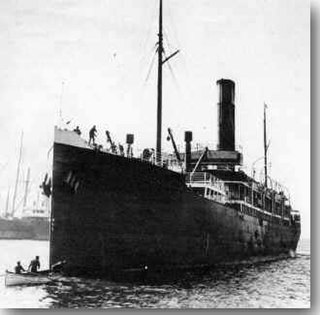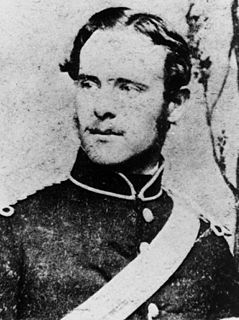Related Research Articles

The passenger ship SS Yongala sank off Cape Bowling Green, Queensland, Australia on 23 March 1911. En route from Melbourne to Cairns she steamed into a cyclone and sank south of Townsville.

Maryborough is a city and a suburb in the Fraser Coast Region, Queensland, Australia. As of June 2018 Maryborough had an estimated urban population of 27,282, having grown slightly at an annual average of 0.12% year-on-year over the preceding five years.

Magnetic Island, known to its Indigenous inhabitants as Yunbenun, is an island 8 kilometres (5.0 mi) offshore from the city of Townsville, Queensland, Australia. This 52 km2 (20.1 sq mi) mountainous island in Cleveland Bay has effectively become a suburb of Townsville, with 2,335 permanent residents. The island is accessible from Townsville Breakwater to Nelly Bay Harbour by ferry. There is a large 39.5 km2 (15.3 sq mi) National Park and bird sanctuary and walking tracks can be taken between the populated bays and to a number of tourist destinations such as the World War II forts.

SS Maheno was an ocean liner belonging to the Union Company of New Zealand that operated in the Tasman Sea, crossing between New Zealand and Australia, from 1905 until 1935.

Bulwer is a small town and locality at the north-western end of Moreton Island within the City of Brisbane, Queensland, Australia.
William Henry Paxton was a prominent businessman in the early days of Mackay, Queensland.

Francis Drummond Greville Stanley (1839—1897) was an architect in Queensland, Australia. He was the Queensland Colonial Architect. Many of his designs are now heritage-listed buildings.

SS Marloo is a heritage-listed shipwreck at Great Sandy National Park, Fraser Island, Fraser Coast Region, Queensland, Australia. It was added to the Queensland Heritage Register on 12 October 2002 but delisted in 2015. Last spotted recently on the 16th of January 2021

Cyclone Sigma was a tropical cyclone that caused severe damage in North Queensland, Australia on 26–27 January 1896 and the loss of at least 23 lives.

Thomas Joseph Campbell was a politician in colonial Queensland. He was a member of the Queensland Legislative Assembly from 1884 to 1885, representing the electorate of Cook.
John Henry Hargreaves was a member of the Queensland Legislative Assembly.
Queen Cristina was a steam cargo ship built in 1896 by Bartram & Sons of Sunderland for Thomas Dunlop & Sons of Glasgow. The ship was designed and built for general cargo trade and spent her career doing tramp trade. She was named after Queen Cristina of Spain, and was the first ship named Queen Cristina in service with the Queen Line.
Lalla Rookh was a barque of 372 tons built by Edward Allen in St Helier, Jersey, in 1939. Her dimensions were 99.9 x 24.0 x 16.8 ft.

Lalla Rookh was an iron three-masted barque, 841 tons, built in 1876 by R & J Evans and Co. in Liverpool and originally owned by E. C. Friend and Co. In 1905 she was sold to Norwegian owners, and in 1916 her name was changed to Effendi. From March 1923 or 1924 she was based in Finland, renamed Karhu, before reverting to her original name in 1926. She was broken up in Bruges, Belgium, in 1928.
Lalla Rookh was a clipper/brig variously recorded as 184 tons and 147 tons, built in Peterhead, Aberdeenshire, Scotland in 1848. She was described as one of the "new Aberdeen clippers".
Lalla Rookh was a square-rigged, iron-hulled tea clipper of 869 tons, built in 1856 in Liverpool, Lancashire, owned by William Prowse & Co. and said to travel fast. She was used for trade with India and China, and was advertised in 1871 as a packet ship to take passengers to Australia. She was completely wrecked at Prawle Point, Devon on 3 March 1873, with the loss of one crew member and all of her cargo of tea and tobacco.
Lalla Rookh was a 380-ton sailing vessel, possibly a brig and most likely built in 1823. She traded in North and South America, and transported a steam engine to New South Wales and a detachment of troops to Brisbane in 1825. She later traded and carried passengers between the East Indies, India and Britain. She was under the command of Captain Green until November 1827, when she came under the command of Captain McCallum, and was wrecked at Pondicherry on 6 March 1828.
Lalla Rookh was a wooden sailing vessel, 333 tons, built by Thomas Metcalfe & Son in South Shields, "rigged as a Snow", meaning that, unlike a normal brig, she had an extra lower square sail on the main mast, which provided additional power. She was completed in March 1825 and owned by Thomas & John Fenwick of North Shields.
References
- 1 2 3 "View Shipwreck - Lalla Rookh". Australasian Underwater Cultural Heritage Database . Australian Government. Department of Agriculture, Water and the Environment . Retrieved 25 January 2021.
 Text may have been copied from this source, which is available under a Attribution 4.0 International (CC BY 4.0) licence.
Text may have been copied from this source, which is available under a Attribution 4.0 International (CC BY 4.0) licence. - 1 2 Beck, Stephen William (2008). "Appendix 3: Database of vessels involved with the labour trade". Maritime mechanisms of contact and change: Archaeological perspectives on the history and conduct of the Queensland labour trade (PDF) (PhD). James Cook University. p. 260. doi:10.25903/5ed6da5799c62.
- 1 2 3 4 5 6 7 8 Walding, Richard (8 May 2012). "Inskip Point Light & Signal Station". Indicator Loop Stations. Retrieved 23 January 2021.
- ↑ Davies, A. G. "The genesis of the port of Brisbane" (PDF)– via University of Queensland.
Read before the Historical Society of Queensland, May 30, 1933.
- ↑ Warren, Raymond J. (30 March 2012). "First half of main register: AA--LY". The Warren Register of Colonial Tall Ships. Retrieved 23 January 2021.
- ↑ "Sigma" in Towmsville". The North Queensland Register . VI (6). 5 February 1896. p. 31. Retrieved 23 January 2021– via National Library of Australia.
- ↑ "The Queensland storm". The Australian Star (2496). New South Wales, Australia. 1 February 1896. p. 6. Retrieved 25 January 2021– via National Library of Australia.
- ↑ "Storm Sigma". The Telegraph (Brisbane) (7266). Queensland, Australia. 31 January 1896. p. 5. Retrieved 25 January 2021– via National Library of Australia.
- ↑ "The cyclone in Queensland". Australian Advertiser . VIII (1188). Western Australia. 4 February 1896. p. 3. Retrieved 25 January 2021– via National Library of Australia.
- ↑ "The Queensland Cyclone". The Express and Telegraph . XXXIII (9,671). South Australia. 1 February 1896. p. 4. Retrieved 25 January 2021– via National Library of Australia.
- 1 2 "Shipping". Maryborough Chronicle, Wide Bay and Burnett Advertiser (7,552). Queensland, Australia. 19 January 1897. p. 2. Retrieved 25 January 2021– via National Library of Australia.
- ↑ "Departures". The Northern Miner . Queensland, Australia. 20 November 1897. p. 4. Retrieved 25 January 2021– via National Library of Australia.
- ↑ "Shipping news. Arrivals". The Northern Miner . Queensland, Australia. 10 August 1898. p. 2. Retrieved 25 January 2021– via National Library of Australia.
- ↑ "Shipping news". The North Queensland Register . Queensland, Australia. 17 August 1898. p. 29. Retrieved 25 January 2021– via National Library of Australia.
- ↑ "Shipping". Maryborough Chronicle, Wide Bay and Burnett Advertiser (7,853). Queensland, Australia. 6 January 1898. p. 2. Retrieved 25 January 2021– via National Library of Australia.
- 1 2 "Queensland shipwrecks, including central and southern Great Barrier Reef". Encyclopaedia of Australian Shipwrecks: Queensland.
- ↑ "Shipping items". The Brisbane Courier . LVI (13,112). Queensland, Australia. 20 January 1900. p. 5. Retrieved 25 January 2021– via National Library of Australia.
- ↑ "Lalla Rookh". The Telegraph (Brisbane) (8, 479). Queensland, Australia. 22 January 1900. p. 5. Retrieved 25 January 2021– via National Library of Australia.
- ↑ "Queensland". The North Western Advocate And The Emu Bay Times . Tasmania, Australia. 22 January 1900. p. 3. Retrieved 25 January 2021– via National Library of Australia.
- ↑ "The Register of Australian and New Zealand Shipping 1902-1903" . Retrieved 25 January 2021– via Issuu.